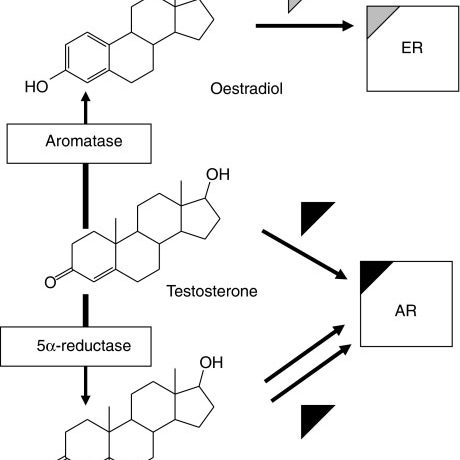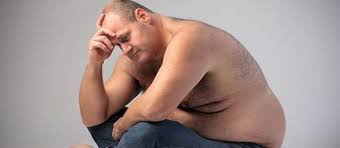
Secondary hypogonadism
One possible consequence of anabolic steroid use is a form of secondary hypogonadism caused by the negative feedback described earlier. Therefore, the use of exogenous androgens by male athletes is the cause of infertility. In practice, the constant presence of androgens and synthetic derivatives in the body blocks the release of GnRH, since the hypothalamus perceives the huge presence of hormones in the body, and pertantone completely reduces or blocks production. This long-term effect leads to testicular atrophy, as the testes are inactive due to the lack of action of LH and FSH, as a rule, contracting. Thus,> the use of steroids becomes the very cause of hypogonadism, described earlier, which in some cases it is with exogenous testosterone, if necessary, replacement therapy. However, this therapy does not cure the disease, but is only a way to replenish what the body can no longer do on its own, that is, produce testosterone.
Following these events, the body drastically reduces endogenous testosterone production for longer or shorter periods, which can last from weeks to months. This leads to a decrease in the production of a sperm called oligospermia, which can lead to a lack of measurable amounts of sperm called azoospermia. This situation arises because without the presence of androgenic hormones, glispermatozoa do not mature.
In this condition, which can occur at the end of the anabolic cycle, the steroid abuser tends to release muscle mass and strength as a lack of androgens, both exogenous and endogenous, determines a purely catabolic hormonal profile. Following this imbalance, an athlete who has used steroids after several months may be in worse physical condition than before the cycle. In practice, the athlete uses steroids to develop strength and muscle, then after use the body returns to its original state and sometimes to a worse state than the original state, since a catabolic state caused by a lack of androgenic hormones can lead to tissue loss. muscle is higher than the gain obtained with the cycle.
Therapeutic Index (Anabolic / Androgenic)
In the medical field and, therefore, also in the sports context, we tend to separate the effects of these anabolic substances, that is, promoting the growth of muscle and androgenic tissues, that is, developing secondary male characteristics, thus identifying the so-called therapeutic index of these substances , that is, the relationship between anabolic and androgenic effects. This classification is used to assess the relationship between commonly sought (anabolic) and unwanted (We recommend to athletes rimobolan) effects.
This assessment is carried out using a specific test in which various anabolic substances are studied based on their effects on the purely genital organ (prostate) and muscle (the cavernous bulb that lifts the anus) by measuring their respective growths compared to the doses used. A reference to pure testosterone, which received a 100 effect on the prostate gland (androgenic effect) and a 100 effect on the muscle elevator of the anus (protoanabolic effect). Other substances are linked to it, measuring the effects on two targets and comparing them to those obtained with testosterone. Thus, the results are expressed in numbers greater than a hundred, if the activity is greater than that of testosterone, and below 100, if it is lower, and the overall ratio is determined by the ratio between two division factors: for example, a substance has a ratio of 400: 25 means that it is in 4 times more anabolic and 1/4 androgen than testosterone, so the anabolic / total androgen ratio is about 16a 1. This ratio, calculated for most anabolic products on the market, is defined precisely as the anabolic / androgenic therapeutic index (A: A). p>

In reality, androgenic and anabolic effects are not associated with different actions, but represent the same action on different tissues. Obviously, the two types of effect are closely related, as muscle development is also a clear androgenic effect, however, this difference allows the assessment and differentiation of various steroids according to the effects. it is obvious that all of these substances have both of these characteristics, since they are determined by the action on the same receptors, however, on different tissues: since the anabolic action is determined by the connection with the receptors present on muscle tissue, while androgenic effects are achieved by binding with receptors present on other tissues, however ALL THIS CLASS OF SUBSTANCES REPRESENT BOTH EFFECTS AND AGROGENIZATION.
Aromatization
Another factor that is considered important in evaluating an anabolic steroid is whether it aromatizes or not.
Aromatization is an enzymatic reaction that converts testosterone to estrogen. Some of the side effects of anabolic steroids are due to their aromatization, since when converted to estrogens, they lead to greater water retention, gynecomastia and more suppression of the HPTA axis.These side effects are closely related to the ability of steroids to supply aromatized natural inestrogens or other substances with estrogenic activity. p>
Not all substances in question are aromatized, since only those with a steroid nucleus equal to testosterone can be metabolized into estradiol, while synthetic substances that have a partially modified nucleus of a substance with lower estrogenic activity, such as derivatives of nortestosterone, may or may not be aromatized as derivatives of DHT.
Converting to DHT
Testosterone is converted by the body into its active metabolite DHT. The action of DHT results in more activity of predetermined tissues such as the prostate gland and hair follicles, which leads to possible side effects such as prostatic hypertrophy and alopecia. On the other hand, DHT is not converted to estradiol, so this leads to a decrease in other effects such as water retention, gynecomastia and HPTA axis suppression (which, however, remains, even if to a lesser extent).
Therefore, another parameter for evaluating steroids is the ability to convert to DHT. This process is also determined by the molecular structure of the substance, in fact, 5α-reductase, the enzyme responsible for this transformation, can transform the substance only if it can reduce carbon in position 5, another steric trace on the A ring can block its activity in how much the enzyme does not bind the substrate .

Reactions of aromatization and decrease in testosterone levels and effects on the corresponding receptors.
